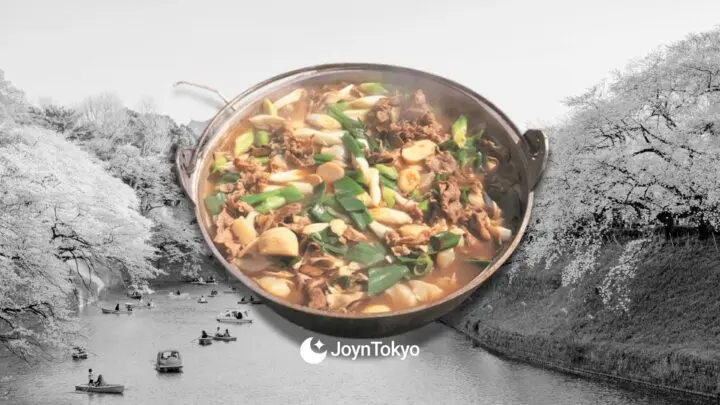As the leaves turn red and gold across northern Japan, locals gather along riverbanks to share steaming bowls of imoni, a hearty taro-based soup. For foreigners living in Japan, discovering imoni means more than tasting a regional dish—it is a way to step into the rhythms of Tohoku life, where food, nature, and community come together each autumn. This guide explains what imoni is, how it differs across regions, and how you can experience this tradition yourself.
What Is Imoni?
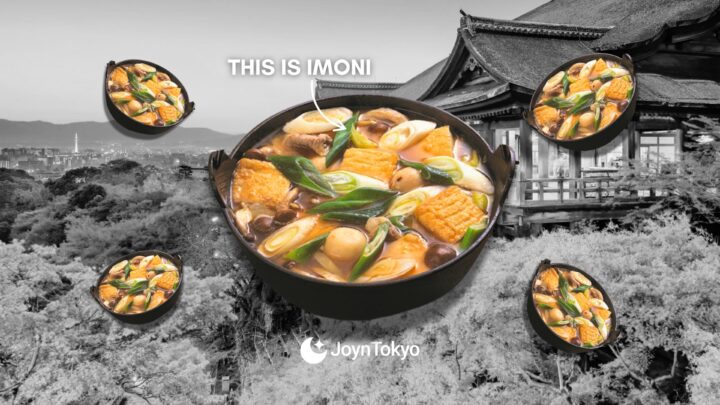
Imoni is a thick autumn soup prepared in large iron pots, usually outdoors near rivers. Families, friends, and entire communities cook and eat together, making it less a simple meal and more a seasonal ritual. The local gathering called imoni-kai is often held in fall in Tohoku regions, where people come together, cook, and eat the meal together. Sharing one pot under the open sky reflects the Tohoku spirit of hospitality and togetherness.
Main Ingredients of Imoni
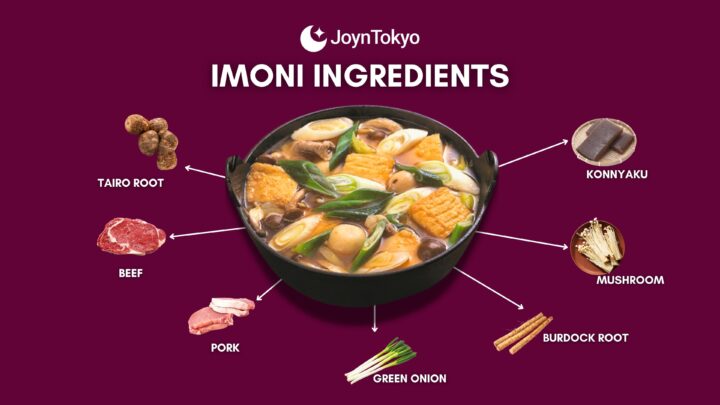
The heart of imoni lies in taro root (satoimo), whose soft, earthy texture thickens the broth naturally. To this base, cooks add sliced meat—beef in Yamagata, pork in Miyagi—along with konnyaku, burdock root, mushrooms, and green onions. The broth itself differs by region: soy sauce in Yamagata, miso in Miyagi, sometimes even seafood stock elsewhere. Despite these variations, the essential character of imoni is warm, filling, and unmistakably autumnal.
Imoni as a Seasonal Ritual
Why do people cook imoni by the river? In Tohoku, autumn marks the harvest, when taro and other root vegetables are at their best. Riversides provide safe open spaces for large fires, and the flowing water symbolizes purity and renewal. Thus, an imoni party is not only about eating but also about appreciating the change of seasons and the gifts of nature.
Regional Variations of Imoni
Each prefecture in Tohoku has its own version of imoni. The recipes are shaped by local tastes and the ingredients available in each region.
Yamagata-Style (Soy Sauce and Beef)
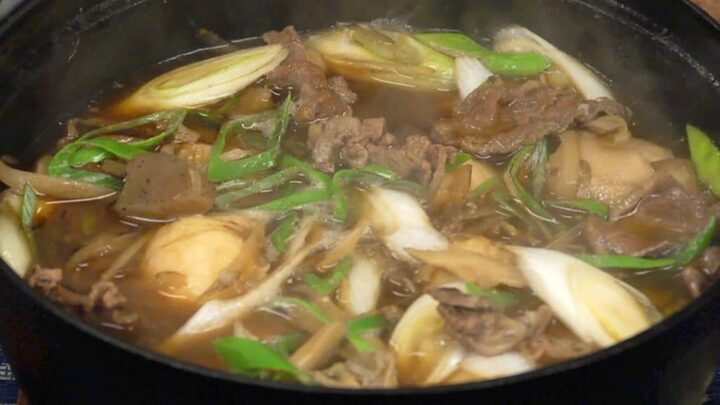
This is the best-known style, featuring a soy sauce base and thinly sliced beef. The broth is slightly sweet, balancing savory richness with the earthy taste of taro.
Miyagi-Style (Miso and Pork)
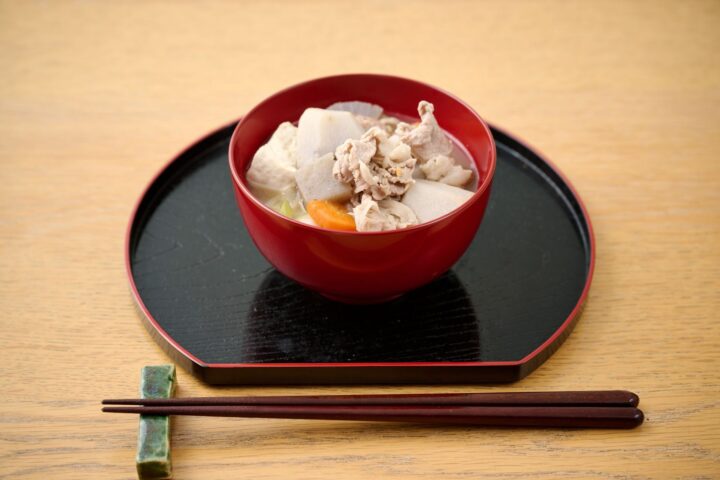
In Miyagi, cooks replace beef with pork and season the broth with miso. This version is heartier, with a deep, savory flavor that pairs perfectly with autumn evenings.
Other Regional Styles
In some areas, seafood, chicken, or additional root vegetables are added. These creative adaptations reflect local resources while preserving taro as the defining ingredient.
Imoni Parties and Community Bonding
Imoni gatherings, called imoni-kai, are a highlight of the season. Groups set up along riverbanks with tents and portable stoves, cooking for hours while enjoying drinks, music, and conversation. The act of stirring a huge pot together creates a sense of unity, making imoni less about the food itself and more about the bonds it nurtures.
The Yamagata Imoni Festival

The largest celebration is the Yamagata Imoni Festival (Nihon-ichi no Imoni-kai Festival), held each September along the Mamigasaki River. Here, an iron pot several meters wide simmers more than six tons of ingredients, stirred with the help of construction cranes. The spectacle of smoke rising from this giant cauldron has become an iconic autumn scene in Japan.
Visitors from across Japan and abroad flock to Yamagata for this event. For foreigners, it is one of the easiest ways to experience authentic community spirit while tasting imoni prepared on an unforgettable scale.
Experiencing Imoni Yourself
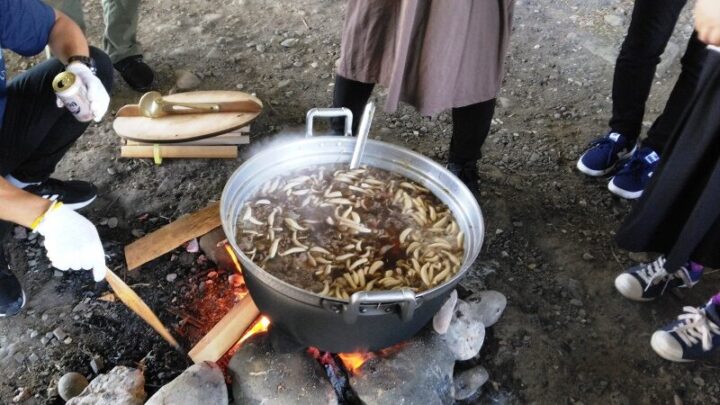
Even if you cannot attend the festival, imoni is accessible to anyone in Japan. Supermarkets stock taro and other ingredients each autumn, and the recipe is simple: simmer taro, meat, and vegetables in soy sauce or miso broth until tender. Restaurants in Tohoku also serve imoni during the season, and some local tourism groups organize smaller imoni parties open to visitors.
Tips for joining an imoni party:
Bring warm clothes, as evenings by the river can be chilly. A picnic sheet or camping chair makes the experience more comfortable. If you attend a local gathering, be ready to share food, drinks, and conversation—it is as much about connecting with others as it is about eating.
Wrapping Up: A Taste of Autumn in Tohoku
Imoni is more than a soup; it is a celebration of harvest, friendship, and seasonal beauty. Whether you try Yamagata’s soy sauce and beef version or Miyagi’s pork and miso style, each bowl carries the warmth of community tradition. For foreigners in Japan, joining an imoni party or festival is a chance to taste autumn with locals—and to feel the spirit of Tohoku from the inside out.

